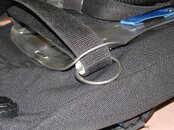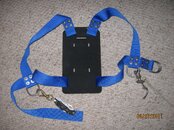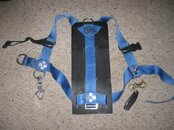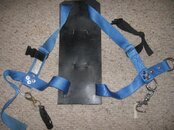I learned from the owner of Deep Sea Supply that there are different grades of stainless. Some are more rust and stain resistant than others -- obviously, the better ones are more expensive.
There are three primary grades used on backplates; 302, 304, and 316 Marine grade stainless.
You can often get similar salt water corrosion resistance from general purpose 302 and 304 grade stainless that has been Passivated as 316 for relatively low exposure applications like a backplate unless you keep in on deck exposed to salt spray continuously.
The rust you get on a backplate, or diving gear in general, tends to be a light staining rather than pitting or running rust. Stainless used in knives is usually a 400 series because 300 series has too much Nickel, which makes the stainless too soft to hold a decent edge.
Even 316-L can suffer corrosion pitting. All you need is for some moron to spray it with sparks from grinding steel nearby. A good fabrication shop will segregate grinding and polishing tools used on stainless and steel to prevent this problem. Unless really severe, passivating will correct this problem.
All stainless corrodes. It is the corrosion or oxidation that creates a thin chromium oxide layer that protects it. The chromium oxide film prevents further surface corrosion by blocking oxygen diffusion to the material below. That film is self-healing, meaning that scratches in the chromium oxide film will be repaired by generating more film in that area unless the scratch is imbedded with a material like iron particles that will interfere with the chemistry.
You cant tell the difference between any of the 300-series grades of stainless by looking. You need to trust the supplier or require mill certifications. All 300 series are non-magnetic. IMHO, fabrication quality is much more important than the grade in this case.








